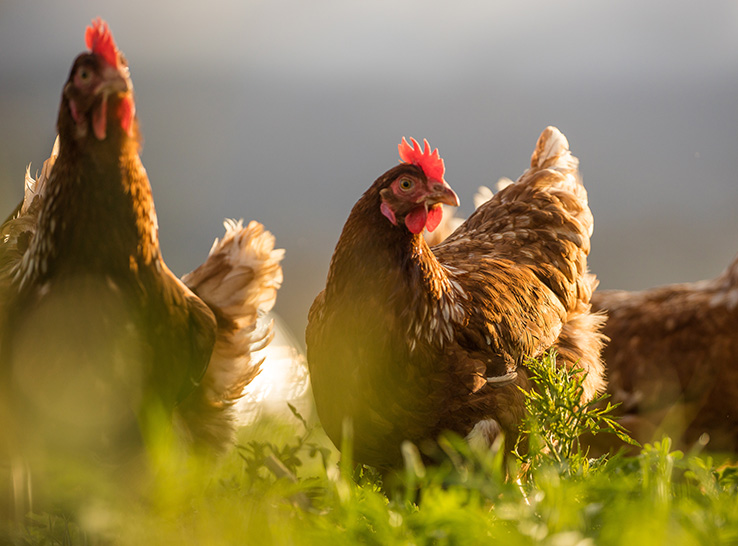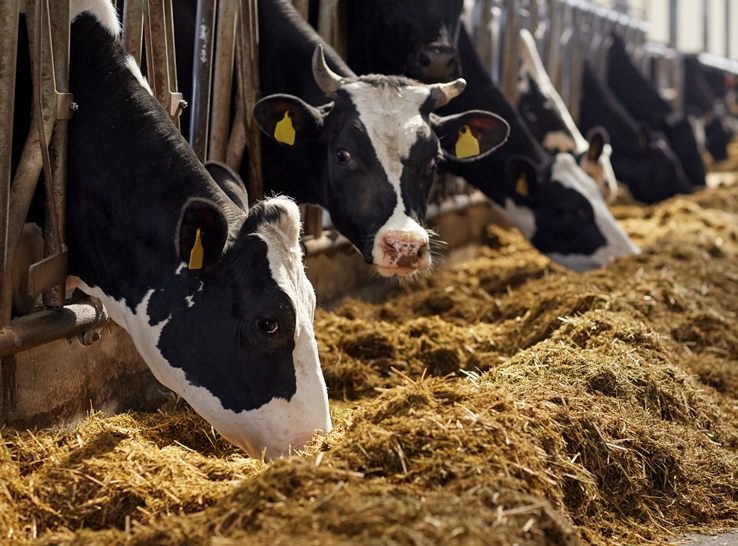As consumer demand for eggs from free-range chickens grows, a big question lingers: what is the best stocking density for chickens in free-range conditions?
Now a new study in The Journal of Applied Poultry Research provides important data on how free-range stocking density affects the risk of spreading microbes via birds or their eggs.
As the researchers point out, there is no standard stocking density for free range layer production. Producers do typically provide about 1 square foot of space per bird when roosting areas are available, and it’s common to provide 1.5 square feet per bird if roosting areas are not available. Does this density affect how microbes spread to hens and their eggs? It was time to find out.
The research team, from the U.S. Department of Agriculture and North Carolina State University, worked with 300 Hy-line Brown laying hens housed in at a low stocking density (4.02 m2/bird) or a high stocking density (2.01 m2/bird).
The team collected environmental and egg samples every seven to nine weeks when the hens were between 20 and 52 weeks old. These samples included plant “forage” samples trimmed back from outdoor areas in the chicken range.
Focus on bacteria
The scientists concentrated on the levels of bacteria, yeast, and mold in the housing environment and on the eggs. Their study revealed an interesting phenomenon. The high stocking density ranges had higher presence of aerobic bacteria (such as Enterobacteriaceae) at week 20; however, the aerobic bacteria levels in the low stocking density ranges caught up soon after that.
Perhaps it was easier for the high-density flocks to pick up and spread more microbes they encountered in the outdoor environment? And yet the researchers found birds in the low stocking density housing actually spread out to use more of their outdoor range. This means that, in theory, those low-density flocks could have been exposed to more environmental microbes sooner.
The researchers emphasize that it is important to factor what free range conditions mean for disease transmission.
“Free-range hens are perceived to have better welfare due to the availability of outdoor access, where they can express behaviors such as dust bathing and foraging (Cooper and Albentosa, 2003),” write the study authors.
“However, access to the outdoors can increase the likelihood of exposure to pathogens of human health concern such as Campylobacter and Salmonella (Kijlstra et al., 2009).”
Surprising trend
The researchers noticed another surprising trend when it came to the presence of Enterobacteriaceae. The low stocking density housing had a higher presence of Enterobacteriaceae by the end of the study period, but the eggs collected from the high stocking density housing had more Enterobacteriaceae.
“Although differences in Enterobacteriaceae levels were observed between low- and high-density paddock stocking of free-range flocks, there does not appear to be a pattern in Enterobacteriaceae contamination levels,” write the study authors.
The researchers noted no significant differences in yeast or mold contamination between the two stocking densities, nor did they find differences in Salmonella or Listeria levels.
So is one stocking density better than another? Finally answering that question may come down to taking a closer look at what hens are getting up to.
“Further research is needed to investigate the relationship between hen behavior and egg and environmental microbiology of free-range laying flocks,” write the study authors.
What does this study mean for producers?
- Microbes remain a risk to free-range layers, even if birds are stocked at a low density.
- More research needs to be carried out to understand potential links between stocking density, hen behavior, and the spread of microbes.
The full paper, titled “Impact of paddock area stocking density of free-range laying hens on egg and environmental microbiology,” can be found in The Journal of Applied Poultry Research and online here.
Editor’s note: Content on Modern Poultry’s Industry Insights pages is provided and/or commissioned by our sponsors, who assume full responsibility for its accuracy and compliance.









